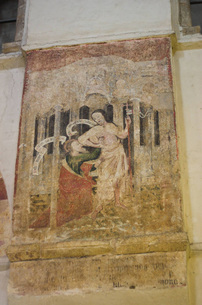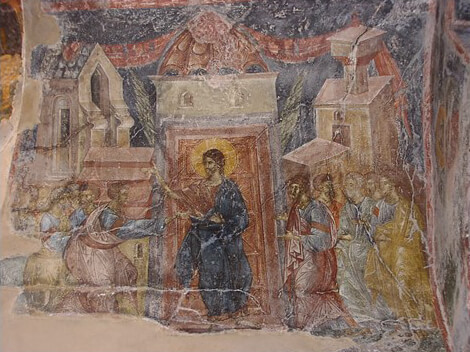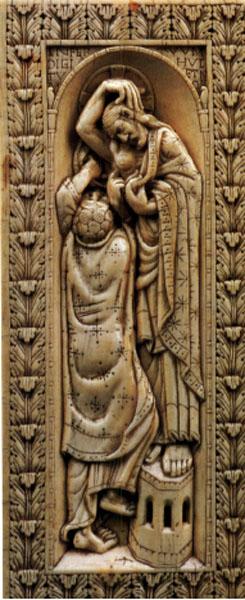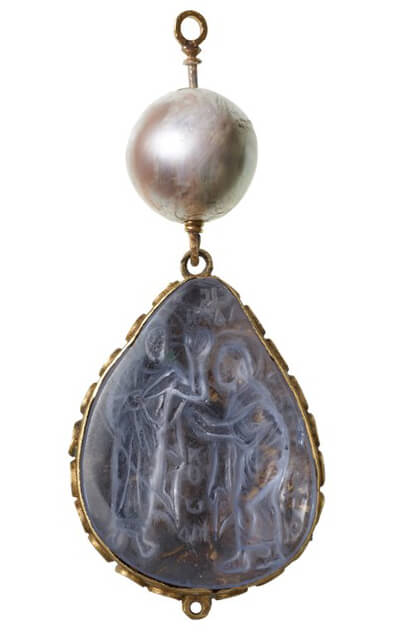|
A new commission has recently given me reason to revisit the iconography known in English as the Doubt, or Incredulity, of Thomas. The apostle is shown reaching out his finger to the wounded side of the newly risen Christ; Thomas declares his belief and Christ pronounces the 'eleventh beatitude': "Blessed are they who have not seen and yet believe." Picture above is a 15th century wallpainting of this scene from Hertfordshire's very own St Alban's Cathedral, and a slightly earlier Byzantine fresco of the same scene from Greece.
The title of the image expresses the unjustified reputation of poor Thomas in the Western church. I have seen some modern icons inscribed the 'Confession' of Thomas, which is better. After all, Thomas recognises Jesus as "My Lord and my God", one of the pivotal moments of the post-resurrection story. By tradition, Thomas was a very young man, even a teenager, among the apostles, brave, loyal and impetuous. Tradition says that he took the gospel to India, where he was martyred and the community of St Thomas, or Syriac, Christians in Kerala still bear witness to his proselytising. Not the work of a timorous recidivist. So my client and I are considering a different name for the piece, which is destined as a wedding gift. The Greek title translates as the 'Touching' of Thomas, and I'm told that the Russians call it the 'Assurance'. At the moment I am weighing up entitling my icon 'The Convincing of Thomas', or maybe even 'the Conviction' I have painted this icon before, but have become dissatisfied with my treatment of it. My present client wants the full Byzantine party - groups of amazed apostles, doors, scenery and so forth, but the scene lends itself to a focus on only the two central figures. I once thought that this was a modernising approach: focusing on the minimalist essentials of the scene as a counterpoint to the distracting sensory abundance of modern life. But in fact I find that this is not true at all, and in my researches I have turned up a number of beautiful and early two figure 'Incredulity' icons. My favourite has always been the Ottonian ivory, around a thousand years old, pictured first below. I love the way Christ tenderly bends down from his high dais and Thomas is stretching up eagerly as if he is actually going to climb into his wounds. I have had a photofraph of it pinned to my inspiration board for years, and one day I shall paint a version for myself. The second image is a tiny Byzantine carved sapphire (reverse side, hence Christ on the left), dating perhaps as far back as the sixth century. Astonishingly it was found among the treasures of the famous Cheapside Hoard, remodelled as an Elizabethan earring. I hope it is on display - I shall be looking out for it next time I visit the Museum of London. You can read a most interesting in-depth article about this jewel here: http://farlang.com/byzantine-gem-cheapside-hoard |
The view from my deskCurrent work, places and events, art travel, and interesting snippets about Christian icons, medieval art, manuscript illumination, egg tempera,, gilding, technique and materials. Categories
All
Archives
January 2024
|





 RSS Feed
RSS Feed